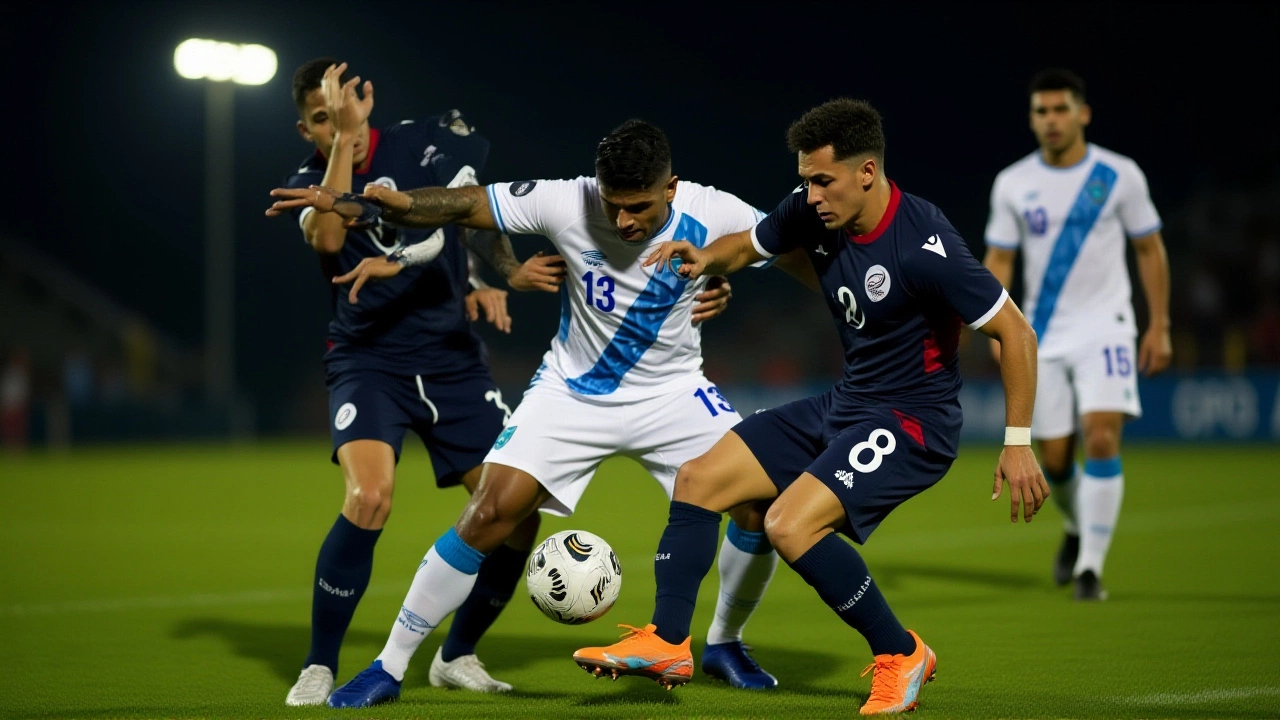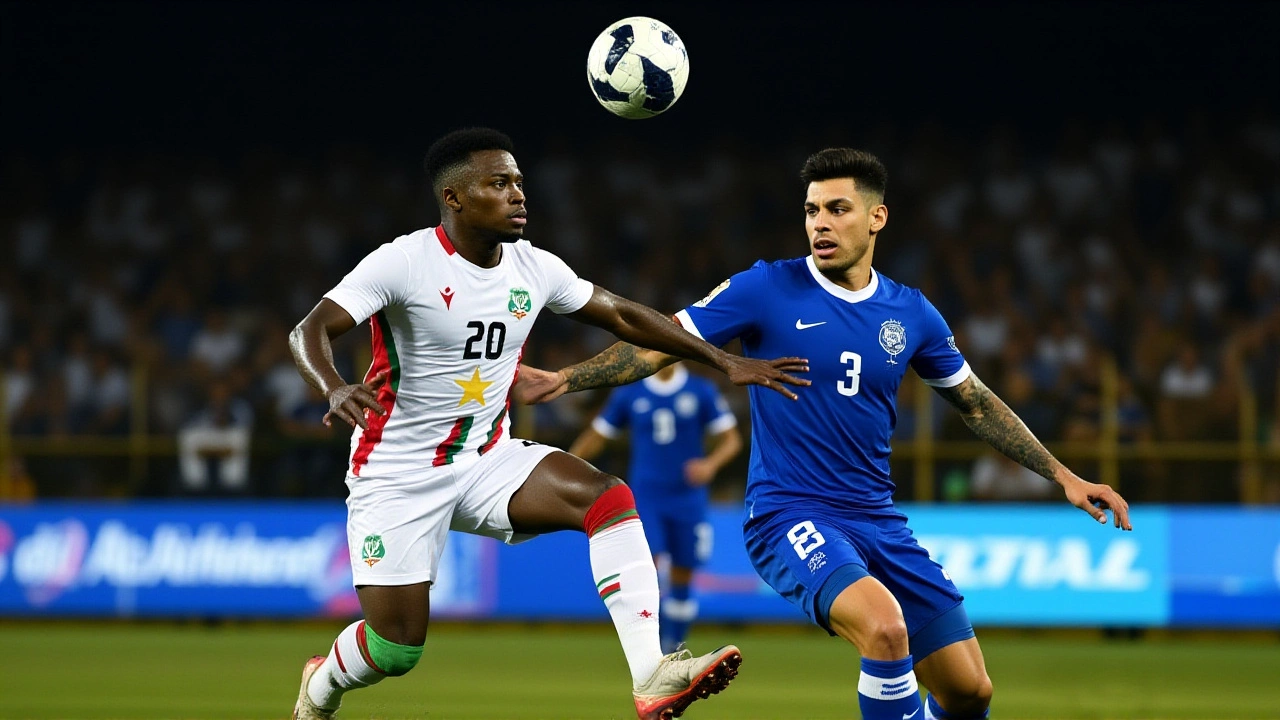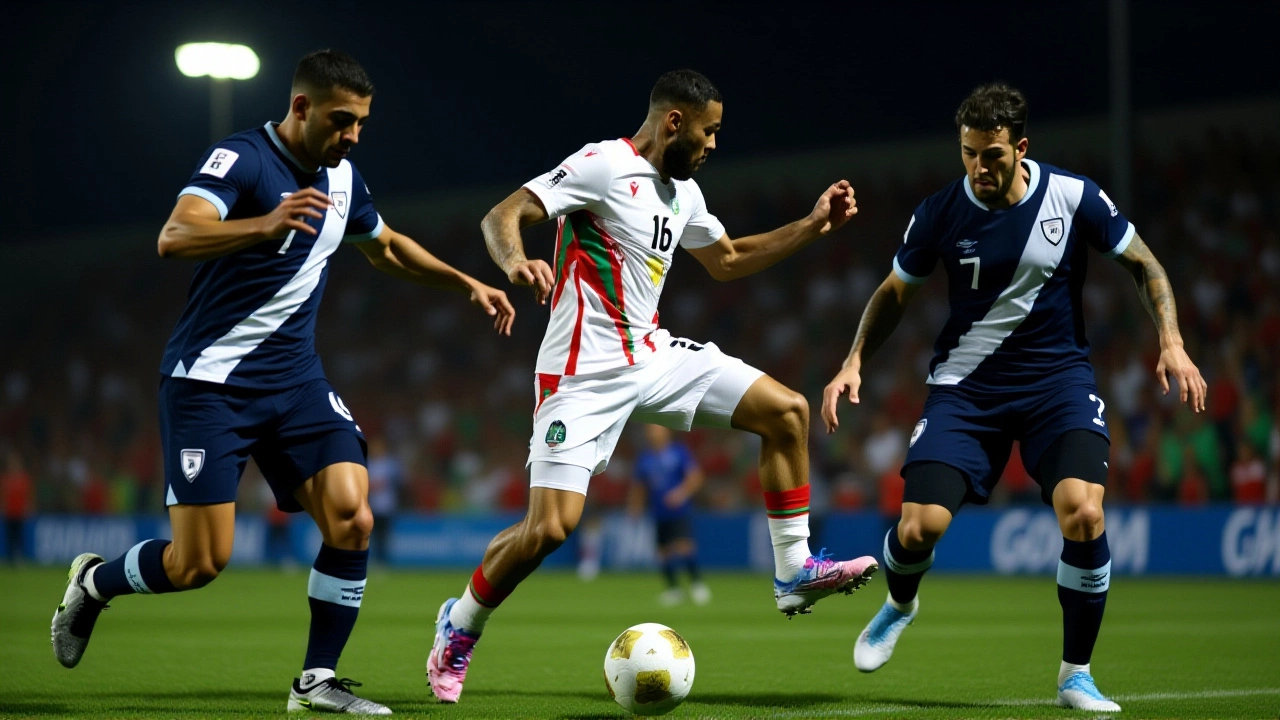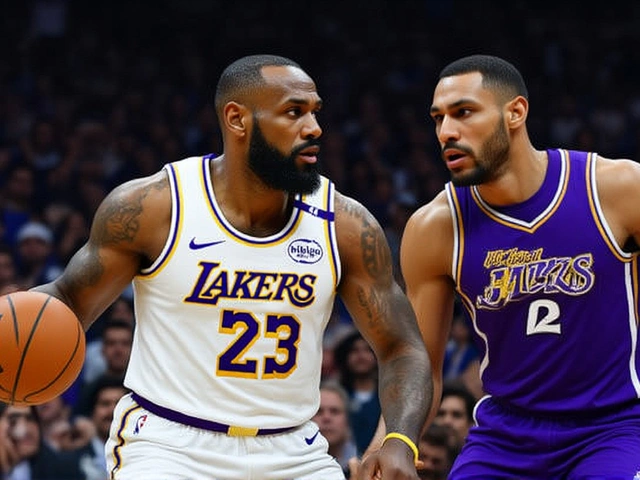When Suriname lost 3-1 to Guatemala on November 18, 2025, at Estadio Manuel Felipe Carrera in Guatemala City, fans in Paramaribo held their breath. Not because they expected to win — they didn’t. But because they knew one mistake could cost them everything. And then, in the final seconds, it happened: a desperate cross from Sheraldo Becker, a misjudged header by Nicolás Samayoa, and a ball that curled into the net — an own goal that didn’t just erase the loss. It resurrected a dream. Suriname, a nation of just 600,000 people, had just secured its first-ever shot at the FIFA World Cup.
How a Loss Became a Lifeline
Guatemala’s goals came in ruthless fashion: Darwin Lom opened the scoring in the 49th minute, followed by Olger Escobar in the 57th, and Óscar Santis in the 65th. The Guatemalan side, playing for pride after being mathematically eliminated, looked sharp. Their goalkeeper, Nicholas Hagen, made critical saves to keep Suriname’s attack at bay.
But Suriname wasn’t trying to win the match. They were trying to win the group. Or at least, to stay ahead of Honduras on goal difference. Entering the match, Suriname had +3 goal difference and 9 goals scored. Honduras, their closest rival for the final playoff spot, had only 5. A 2-0 loss would’ve sunk them. A 3-1 loss? That was survivable — if they didn’t concede more. And then, in the 90'+3 minute, the impossible happened. Becker’s cross into the box, intended for a striker’s header, was misdirected by Samayoa. The ball hit his chest, spun, and slipped past Hagen. The stadium fell silent. Suriname’s bench erupted. The scoreboard read: Guatemala 3, Suriname 1. But the table? That told a different story.
The Numbers That Saved a Nation
It wasn’t just the own goal that did the trick. It was the math. Suriname finished Group A with 9 points from 2 wins, 3 draws, and 1 loss. Guatemala, despite the win, ended with 8 points. But the real battle was among the second-place teams across all groups. Suriname’s +3 goal difference and 9 goals scored were the edge they needed. Honduras, with 8 points and a mere +1 goal difference, was left out. Panama, with 12 points, topped the group. But Suriname? They were the best second-place team in the final round.
"It’s not about how you win," said Surinamese coach J. Grot after the match. "It’s about how you survive." And survive they did. The own goal wasn’t just luck — it was the culmination of a campaign built on grit. Suriname had drawn 1-1 with Guatemala just eight weeks earlier, on October 10, 2025. They’d held Mexico to a draw. They’d beaten El Salvador. Every point mattered. Every goal counted. And now, they were in.
The Road to Mexico — and Beyond
Next up: the intercontinental playoff. Suriname will face Bolivia in a two-leg tie, with the winner advancing to face Iraq for one of the final two spots in the 2026 World Cup. The first leg is scheduled for March 2026, likely in La Paz — at 3,600 meters above sea level. Suriname’s players, mostly based in the Netherlands, will need to adapt quickly. Many have never played at altitude. Few have faced Bolivia’s physical midfield.
"We’re not just playing for ourselves," said Becker, who now carries the weight of a nation’s hope. "We’re playing for every kid in Paramaribo who’s never seen their country on the World Cup stage. We’re playing for the grandfathers who said it couldn’t be done. Now, we have to prove them wrong. Again."

Why This Matters Beyond the Pitch
Suriname is the smallest nation in South America by population. It’s the only Dutch-speaking country on the continent. Its national team has never qualified for a World Cup. In 2022, they lost to Trinidad and Tobago in the CONCACAF qualifiers. In 2018, they didn’t even make it past the first round. But now? They’re one win away from playing on the world’s biggest stage. This isn’t just sports. It’s identity. It’s history. It’s proof that even the most unlikely teams can defy the odds — if they refuse to give up.
For Guatemala, the win was bittersweet. They finished third in the group, their best performance in decades. But their celebration was muted. They knew they’d been the spoiler. The villain in a story that wasn’t theirs to tell.
What Comes Next?
Suriname’s next challenge is logistical as much as tactical. The team will need to train at altitude, possibly in Colorado or Mexico, before the March fixtures. Their federation has already begun fundraising for travel expenses — a tall order for a nation with limited sports funding. FIFA has promised support, but the real pressure is on the Dutch football community. Many Surinamese players are based in the Netherlands. Will clubs like Ajax and PSV release their stars for the playoff? Will Dutch fans rally behind them?
Meanwhile, CONCACAF has confirmed that the intercontinental playoff will be hosted in Mexico, as previously announced. The winner of Suriname vs. Bolivia will face Iraq in a single-match final in Qatar — a symbolic nod to the 2022 World Cup host. The stakes? A ticket to the 2026 tournament in the United States, Canada, and Mexico.

Background: A Legacy in the Making
Suriname’s football history is one of near-misses. In 1976, they qualified for the CONCACAF Championship — their only major tournament appearance before now. Their best World Cup qualifying run came in 2002, when they lost to the U.S. on away goals. Since then, they’ve been stuck in the lower tiers. But this campaign changed everything. Under coach J. Grot, they played compact, disciplined football. They didn’t dominate. But they didn’t collapse. And when it mattered most, they held on — thanks to a defender’s blunder and a cross from Becker.
"It’s not how you score," said former Surinamese captain D. Jubitana, now a pundit. "It’s how you hold on. And tonight, they held on like warriors."
Frequently Asked Questions
How did Suriname qualify for the playoffs despite losing?
Suriname finished second in CONCACAF Group A with 9 points and a +3 goal difference, edging out Honduras on goal difference despite both having 8 points. Suriname scored 9 goals total, while Honduras managed only 5, giving Suriname a +4 advantage in goals scored — the tiebreaker that secured their spot as the best second-place team in the final round.
Who scored the own goal that saved Suriname?
Guatemalan defender Nicolás Samayoa accidentally scored the own goal in the 90'+3 minute after a cross from Suriname’s Sheraldo Becker. The ball deflected off his head into the net, preserving Suriname’s goal difference and keeping their World Cup hopes alive.
What’s the next step for Suriname?
Suriname will face Bolivia in a two-leg intercontinental playoff in March 2026. The winner advances to a single-match final against Iraq in Qatar, with the victor earning one of the final two spots in the 2026 FIFA World Cup.
Why is this such a big deal for Suriname?
Suriname has never qualified for a FIFA World Cup in its history. With a population under 600,000 and limited resources, their journey to the playoffs represents a historic breakthrough. A win against Bolivia would make them the smallest nation ever to reach the World Cup finals, turning a national dream into reality.
How did the group standings shape up after the match?
Panama finished first in Group A with 12 points (3-3-0), Suriname second with 9 points (2-3-1), Guatemala third with 8 points (2-2-2), and El Salvador fourth with 3 points (1-0-5). Suriname’s goal difference (+3) and total goals scored (9) were the deciding factors that kept them ahead of Honduras, who had 8 points but only +1 goal difference and 5 goals.
What role did the Netherlands play in Suriname’s qualification?
Many of Suriname’s key players, including Sheraldo Becker and D. Jubitana, play professionally in the Dutch Eredivisie. The Netherlands’ football infrastructure, coaching networks, and player development systems have significantly strengthened Suriname’s squad. While FIFA rules prevent dual representation, Dutch clubs’ support in releasing players for international duty was crucial for their playoff preparation.



